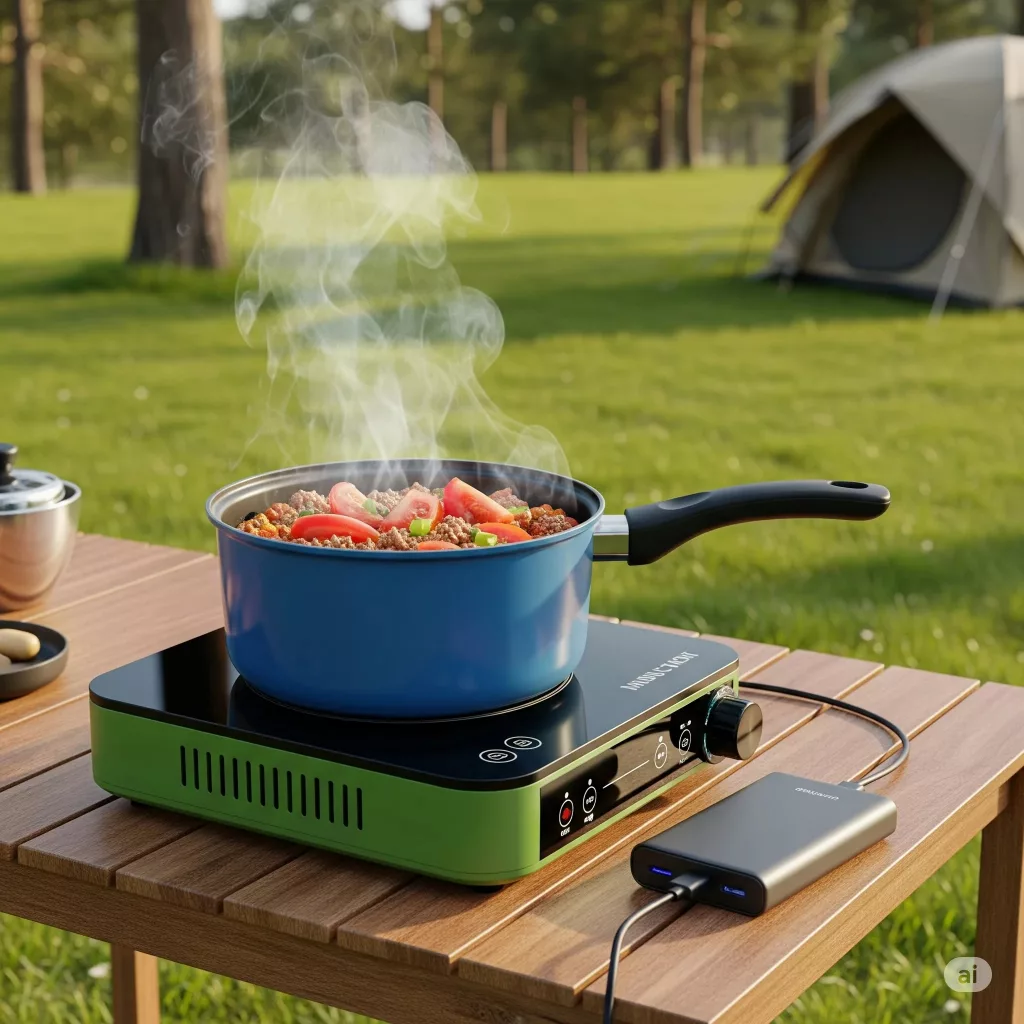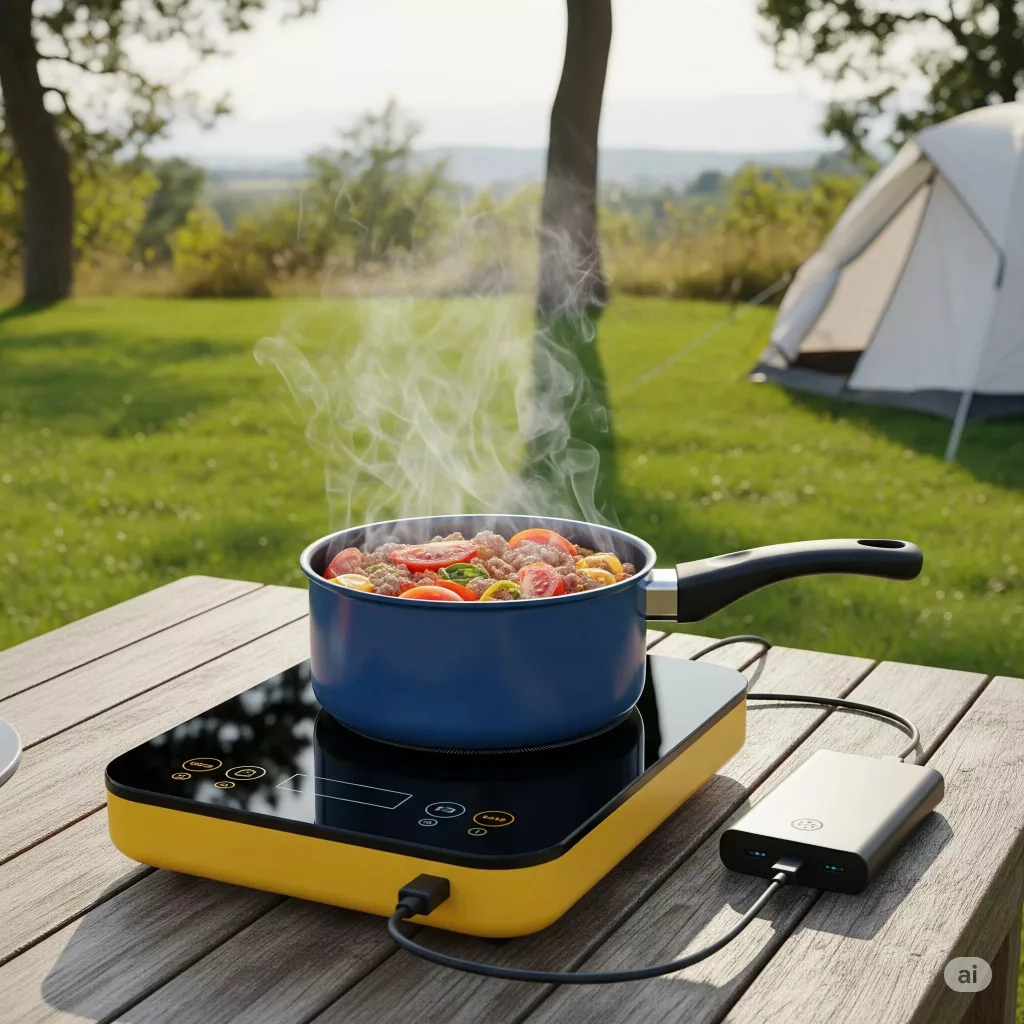Battery powered camping stoves are revolutionizing the way we cook in the great outdoors. Gone are the days of juggling propane canisters, dealing with smoky fires, or worrying about fuel shortages. These innovative stoves—whether standalone units with built-in batteries or hotplates paired with portable power stations—offer clean, quiet, and precise cooking anywhere you can carry a charged battery. This article explores how battery powered camping stoves work, their unique advantages, how to choose the right setup, and practical tips for getting the most out of them. If you’re looking for a modern, hassle-free camp kitchen experience, read on to discover why these stoves are the perfect choice.
Table of Contents
- How Battery Powered Camping Stoves Work
- Why Battery Powered Camping Stoves Stand Out
- Types of Battery Powered Camping Stoves
- Choosing the Right Battery Powered Camping Stove
- Cooking Tips for Battery Powered Camping Stoves
- Conclusion
How Battery Powered Camping Stoves Work
The Basics
Battery powered camping stoves convert stored electrical energy into heat for cooking. They come in two primary designs:
- Resistive Hotplates: These use a metal element that heats up as electricity flows through it. Simple and versatile, they work with any flat-bottomed cookware and typically draw 100–700 watts, making them ideal for compact setups.
- Induction Burners: These generate a magnetic field to heat ferromagnetic cookware (like stainless steel or cast iron) directly, offering greater efficiency and precise control. They usually draw 600–1,500 watts, with camp-friendly models leaning toward the lower end.
These stoves are either self-contained with an integrated battery or powered by a separate portable power station. The choice depends on whether you prioritize portability or flexibility in battery capacity.
Power and Energy Explained
To use battery powered camping stoves effectively, understand two key metrics:
- Power (Watts): Determines how quickly the stove heats. Higher watts mean faster boiling and better performance for tasks like searing.
- Energy (Watt-hours, Wh): Represents the battery’s capacity, or how long it can sustain cooking before needing a recharge.
For example, boiling 1 liter of water from 20°C to 100°C theoretically requires ~93 Wh. With real-world efficiencies (60–80%), expect to use ~120–150 Wh per liter. A 300 Wh battery might boil 2 liters, while a 600 Wh battery could handle 4–5 liters. Pan cooking (e.g., eggs or pancakes) typically uses 30–100 Wh per meal, depending on duration and heat settings.
Higher power (e.g., 1,000 W vs. 300 W) speeds up cooking, reducing boil times from 12–20 minutes to 6–10 minutes for a liter of water. This is critical for group meals or high-heat tasks like stir-frying.

Why Battery Powered Camping Stoves Stand Out
Clean and Quiet Operation
Unlike propane or wood stoves, battery powered camping stoves produce no fumes, soot, or noise. They create a calm, home-like cooking experience, perfect for early mornings or crowded campsites where silence is golden. This makes them ideal for families, photographers, or anyone who values a peaceful outdoor setting.
Precise and Reliable Cooking
With instant heat adjustments, these stoves offer unmatched control. Whether you’re simmering a delicate sauce or boiling water for pasta, you get consistent results. Induction models, in particular, excel at fine-tuned tasks like melting chocolate or cooking multi-course meals, elevating your camp culinary game.
Enhanced Safety
No open flames mean reduced fire risks and no carbon monoxide concerns from fuel combustion. Built-in battery protections (e.g., over-current, over-temperature) add safety, though you must still cook in well-ventilated areas, avoid enclosed spaces, and follow manufacturer guidelines. In some regions, battery powered stoves are allowed under fire bans where flame-based stoves are prohibited.

Zero Waste, Simplified Planning
Forget packing out empty fuel canisters or estimating leftover fuel. Battery powered camping stoves show you exactly how much charge remains, making trip planning straightforward. Over time, recharging batteries saves money and reduces environmental waste compared to disposable fuel.
Versatile Power Use
The electricity powering your stove can also charge phones, cameras, lanterns, or medical devices like CPAP machines. Pairing a stove with a portable power station turns it into a multi-purpose camp hub, especially when combined with solar panels for sustainable recharging.
Access to Restricted Areas
Some locations—like certain trailheads, boats, or picnic areas—ban open flames but permit electric stoves. Battery powered camping stoves let you cook in these settings or during rainy weather under a sheltered porch (with proper ventilation), offering flexibility traditional stoves can’t match.
Types of Battery Powered Camping Stoves
Standalone Battery Stoves
These all-in-one units combine a heating element and battery, offering simplicity and portability. They’re best for solo trips, day outings, or emergency kits but may have limited power (300–600 W) and fixed battery capacity.
Power Station + Burner Combos
Pair a portable power station with a separate induction or resistive burner for maximum flexibility. You can choose higher power (up to 1,500 W) and larger batteries, making this setup ideal for car camping, vanlife, or group trips where you’re also powering other devices.
Power Levels
- Low-Power (100–500 W): Slow but energy-efficient, great for solo travelers or simple meals like oatmeal or coffee.
- Mid-Power (600–900 W): Balanced for couples or small groups, handling boiling and light pan cooking.
- High-Power (1,000–1,500 W): Kitchen-like performance for groups, searing meats, or complex meals, requiring a robust power station.

Choosing the Right Battery Powered Camping Stove
Step 1: Match Power to Cooking Needs
Consider your menu. For coffee, tea, or dehydrated meals, 300–600 W suffices. For one-pan dishes like eggs or stir-fries, aim for 600–1,000 W. For group cooking or high-heat tasks, choose 1,000–1,500 W.
Step 2: Calculate Energy Needs
Estimate daily energy use per person: coffee/tea (40–120 Wh), dehydrated meals (60–140 Wh), pan cooking (50–150 Wh), or searing (120–250 Wh). For two people cooking breakfast and dinner, plan for 300–600 Wh/day; a family of four may need 700–1,200 Wh/day. Add 20% for inefficiencies or cold weather.
Step 3: Battery Type and Weight
- NMC Lithium-Ion: Lightweight but shorter lifespan.
- LiFePO₄: Heavier but more durable and safer, ideal for frequent use.
Step 4: Cookware Compatibility
Induction stoves require magnetic cookware (test with a magnet). Resistive hotplates work with any flat-bottomed pot or pan.
Step 5: Environmental Factors
Cold weather reduces battery efficiency, so insulate batteries and add a 15–25% capacity buffer in winter.
Step 6: Safety and Durability
Choose stoves with stable bases, splash resistance, and safety features like tip-over or overheat protection.
Charging Options
Charge at home for simplicity, use a vehicle’s 12V DC for slow top-ups, or pair with a 100–200 W solar panel for off-grid sustainability. Swappable batteries allow continuous cooking while one charges.

Cooking Tips for Battery Powered Camping Stoves
Maximize efficiency with these techniques:
- Use tight-fitting lids to trap heat.
- Match pot size to burner diameter to avoid energy loss.
- Shield the stove from wind to maintain efficiency.
- Pre-heat sparingly and batch tasks (e.g., boil water, then cook).
- Use insulated pot cozies to keep food warm without extra energy.
- Choose efficient cookware (e.g., stainless steel for induction, thin-walled for resistive).
Conclusion
Battery powered camping stoves are a game-changer for outdoor cooking, offering a clean, quiet, and precise alternative to traditional fuel-based stoves. They eliminate waste, enhance safety, and provide unmatched flexibility for car camping, vanlife, family trips, or flame-restricted areas. By choosing the right power level, battery capacity, and cooking techniques, you can create a camp kitchen that feels like home. Embrace the future of outdoor cooking with battery powered camping stoves—a perfect blend of convenience, sustainability, and culinary freedom.









